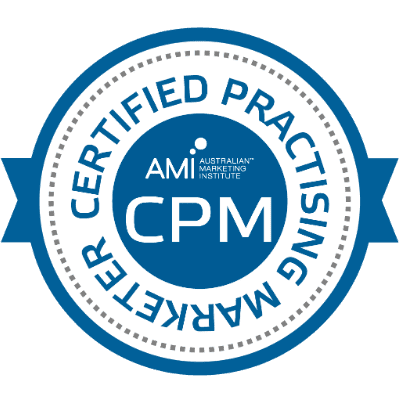The Ultimate Local SEO Checklist for Small Businesses
Is your local SEO strategy all over the place? Our ultimate local SEO checklist will help you to get organized, set goals, and start taking action.
Search engine optimization strategies for local businesses are similar to those of national companies. You need to make sure that your pages rank higher than those of your competitors.
Still, there are some major differences when you’re advertising to a local market. For instance, you’ll need to focus on regional keywords in your content.
According to a Google study, half of the customers who searched for a local business on their phone visited that business the same day.
To help you out, we’ve compiled a local SEO checklist. If someone is searching for a product or service in your area, you need to rank higher than other businesses. With these tips, you’ll get that opportunity.
Content and Backlinks
Top-notch content is the backbone of every SEO strategy. It’s also one of the most important elements in this local SEO checklist.
When it comes to local businesses, online content is one of the primary ways new customers will find your company.
The search engines prioritize fresh, original content. Creating engaging blog posts is the best way to climb the ranks of search engines.
Focus on readability in your blog posts. User experience is paramount.
You can’t jam a bunch of keywords into a post, so it climbs the ranks. This is called “keyword stuffing,” and search engines are wise about it.
Eventually, those less-engaging posts will affect your website traffic in the long run.
Provide Interesting, Necessary Information
No local SEO checklist would be complete without mentioning backlinks.
Backlinks are links to your website that users find during their online searches. You can develop a log of backlinks in several ways, especially by creating engaging content.
Give local bloggers and journalists a reason to link to your website by providing informative information.
You should also reach out to them with a link to your site. Request that they include a link if they find an appropriate place in their posts. Write a comment on a blog or contact creators via email or social media.
If they like your content, they won’t have a problem throwing you a bone in a future article.
Know Your Demographic
Knowing your audience is an essential element of any SEO strategy. It’s especially important for local businesses.
Besides prioritizing local keywords, you need to develop content that will engage your target audience.
Write blog posts and informative content that appeal to the type of people who are most likely to visit your company. Write some posts that capitalize on search results from your area.
Be Aware of Trends
Search engines are aware of what’s trending on the Internet and can give you an idea of what you should include on your company website. Take a look at Google trends to see what people are searching for.
Additionally, capitalizing on seasonal trends is always a good strategy. Google will help you here as well.
With this information, you can create a content calendar for your website. Once you know what local people are looking, tailor your niche content accordingly.
Customer Reviews
Optimizing customer reviews is one of the best ways to attract customers to your local business.
Use Google My Business, Yelp, Facebook, and social platforms to get your name out there. This will also make it easier for your customers to leave feedback.
Try to find out what social media sites your audience visits the most, and prioritize these first. If you can, hire someone to manage your social media profiles to increase engagement.
Respond to reviews – both good and bad – to make sure customers feel as though their opinions are valued.
No Fake Reviews
Unfortunately, many websites buy fake reviews from various sources to boost their ratings on certain sites. This is effective for some, but it’s unethical and can lead to an SEO penalty down the road.
If you’ve paid for positive reviews, those reviews probably don’t sound natural. Google will eventually catch on, and after that, your page ranking will drop.
Additionally, fake reviews are relatively easy to spot. If a customer perceives a review as fake, he won’t trust you anymore.
In the long term, it’s not worth paying for fake reviews.
The Real World: Fantastic Service
Of course, transparent customer reviews means your service will have to be exceptional.
About 97 percent of customers look for online user reviews before visiting a local business. This means that a few bad reviews could tarnish your reputation.
As long as your customer service is up to the task, customer reviews will do nothing but help your business grow.
Get the Most from Your Website
Optimizing your website is the most important tip on this local SEO checklist. Without a fully optimized website, your marketing efforts will be in vain.
Ahead are some quick tips to make sure you’re getting the most from your online presence
Make It Easy to Find You
Add a Google Maps feature to your website. Include your contact information on every page.
Get customers to think about contacting or coming in with every blog post they visit.
Create an “About Us” Page
The “About Us” section is critical for local businesses. Customers want to know your story, and this is the best place to give it to them.
Including Customer Reviews
Make your reviews easy to see, so that future customers know what fantastic service you provide.
Make It Mobile Friendly
You’ll get a large percentage of your traffic from mobile devices. Thus, it’s essential to make your website easily viewable on phones and tablets. If it isn’t, chances are customers will look elsewhere.
Use This Local SEO Checklist to Gain More Customers
Providing great service isn’t enough to get new customers. Nowadays, you have to prioritize your online presence as much as helping your customers find what they need.
With this local SEO checklist, you should be on your way to shooting up the local SEO rankings. If you need any help, take a look at how we can get the most from your website’s SEO!







